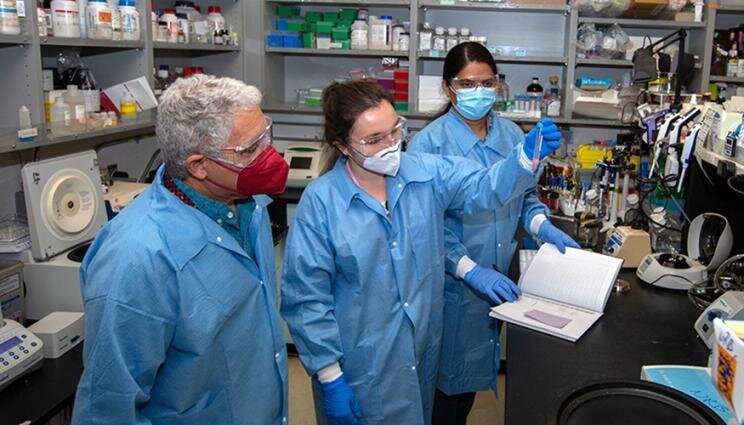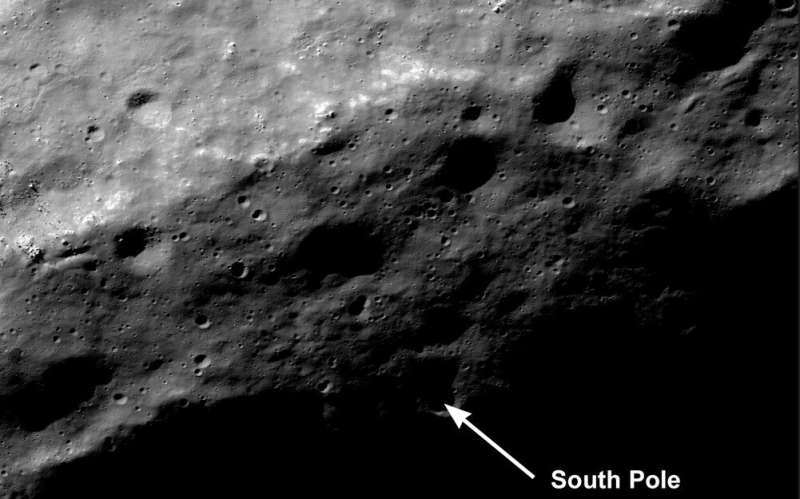
Copernical Team
Using artificial intelligence to find anomalies hiding in massive datasets
 Identifying a malfunction in the nation's power grid can be like trying to find a needle in an enormous haystack. Hundreds of thousands of interrelated sensors spread across the U.S. capture data on electric current, voltage, and other critical information in real time, often taking multiple recordings per second.
Researchers at the MIT-IBM Watson AI Lab have devised a computationally effi
Identifying a malfunction in the nation's power grid can be like trying to find a needle in an enormous haystack. Hundreds of thousands of interrelated sensors spread across the U.S. capture data on electric current, voltage, and other critical information in real time, often taking multiple recordings per second.
Researchers at the MIT-IBM Watson AI Lab have devised a computationally effi Northrop Grumman and Ball Aerospace to develop new missile warning system sensor
 Northrop Grumman and Ball Aerospace will design and develop the two mission payloads for the U.S. Space Force's Next Generation Overhead Persistent Infrared Polar (NGP) program.
"NGP combines Northrop Grumman's proven experience in missile warning and defense with Ball Aerospace's expertise in optical sensors and mission data processing," said Sarah Willoughby, vice president, overhead per
Northrop Grumman and Ball Aerospace will design and develop the two mission payloads for the U.S. Space Force's Next Generation Overhead Persistent Infrared Polar (NGP) program.
"NGP combines Northrop Grumman's proven experience in missile warning and defense with Ball Aerospace's expertise in optical sensors and mission data processing," said Sarah Willoughby, vice president, overhead per Lockheed Martin selects mission payload providers for missile warning satellite system
 Lockheed Martin has selected Raytheon Technologies to provide a second mission payload for the Next Generation Overhead Persistent Infrared Geosynchronous Earth Orbit Block 0 missile warning satellite system - also known as NGG. Both Raytheon Technologies and Northrop Grumman are each already on contract to provide one mission payload for the three-satellite procurement.
Lockheed Martin is
Lockheed Martin has selected Raytheon Technologies to provide a second mission payload for the Next Generation Overhead Persistent Infrared Geosynchronous Earth Orbit Block 0 missile warning satellite system - also known as NGG. Both Raytheon Technologies and Northrop Grumman are each already on contract to provide one mission payload for the three-satellite procurement.
Lockheed Martin is First Platforms are Retracted Ahead of Artemis I First Rollout to Launch Pad
 The Artemis I Moon rocket is getting closer to rolling out of the Vehicle Assembly Building (VAB) at NASA's Kennedy Space Center in Florida for the first time.
The first two of 20 platforms surrounding the Space Launch System (SLS) and Orion spacecraft that allow work on the integrated system inside the building were retracted for roll out to Launch Complex 39B. Teams retracted the platfor
The Artemis I Moon rocket is getting closer to rolling out of the Vehicle Assembly Building (VAB) at NASA's Kennedy Space Center in Florida for the first time.
The first two of 20 platforms surrounding the Space Launch System (SLS) and Orion spacecraft that allow work on the integrated system inside the building were retracted for roll out to Launch Complex 39B. Teams retracted the platfor Airbus Ventures invests in CesiumAstro's Series B
 Airbus Ventures proudly announces its investment in CesiumAstro Inc., a developer of advanced aerospace communication systems, which today publicized its $60 million oversubscribed Series B funding round, co-led by Airbus Ventures and Forever Ventures, with strategic participation from L3Harris Technologies (NYSE: LHX). Returning investors include Kleiner Perkins, Lavrock Ventures, Franklin Temp
Airbus Ventures proudly announces its investment in CesiumAstro Inc., a developer of advanced aerospace communication systems, which today publicized its $60 million oversubscribed Series B funding round, co-led by Airbus Ventures and Forever Ventures, with strategic participation from L3Harris Technologies (NYSE: LHX). Returning investors include Kleiner Perkins, Lavrock Ventures, Franklin Temp Fleet Space Technologies wins Australian Government grant to build space manufacturing hub
 Fleet Space Technologies is delighted to announce that the Australian Government has committed $20million (USD) to the development of the Space Manufacturing Hub in Adelaide, South Australia. This adds to funds already committed by The Government of South Australia ($20million AUS) and a consortium of leading space, aerospace and advanced air mobility companies including Fleet, Q-CTRL, AtSpace P
Fleet Space Technologies is delighted to announce that the Australian Government has committed $20million (USD) to the development of the Space Manufacturing Hub in Adelaide, South Australia. This adds to funds already committed by The Government of South Australia ($20million AUS) and a consortium of leading space, aerospace and advanced air mobility companies including Fleet, Q-CTRL, AtSpace P Russian move to hold up OneWeb launch may affect entire space industry
 Russia's invasion of Ukraine hit the space industry harder Wednesday after Russian space agency Roscosmos said it would hold up a satellite launch for a British company - which experts say may completely shift the industry away from Russia.
OneWeb, a communications satellite company partly owned by the British government, intended to launch 36 satellites Friday on a Russian Soyuz rocket. B
Russia's invasion of Ukraine hit the space industry harder Wednesday after Russian space agency Roscosmos said it would hold up a satellite launch for a British company - which experts say may completely shift the industry away from Russia.
OneWeb, a communications satellite company partly owned by the British government, intended to launch 36 satellites Friday on a Russian Soyuz rocket. B Study finds new biomarkers that could assist in identifying deep-space flight risks

An international team of scientists has found new biomarkers that can be used for diagnostic purposes and potentially as predictive tools of the risks associated with deep-space flight.
Russia wants launch guarantees from Europe's Arianespace
 Russia's space agency on Wednesday demanded legal guarantees from Europe's Arianespace and OneWeb that satellites Moscow is set to launch this year will not be used for military purposes.
Roscosmos also said demanded the British government had to give up its stake in OneWeb, a global satellite communications company, because of "Britain's hostile position on Russia".
The statement from t
Russia's space agency on Wednesday demanded legal guarantees from Europe's Arianespace and OneWeb that satellites Moscow is set to launch this year will not be used for military purposes.
Roscosmos also said demanded the British government had to give up its stake in OneWeb, a global satellite communications company, because of "Britain's hostile position on Russia".
The statement from t The exact point of the moon's south pole

Since 2009, the Lunar Reconnaissance Orbiter (LRO) has been taking high-resolution pictures of the lunar surface. This data, along with the information from a laser altimeter mapping instrument has allowed scientists to create an incredibly detailed map of the moon. NASA says they can now confidently pinpoint any feature on the moon, including the exact location of its south pole.
Whenever humans return to the moon, a detailed "roadmap" will be extremely helpful for astronauts to accurately find their way.
